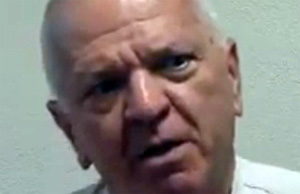By Cheryl Sullenger, Operation Rescue Senior Policy Advisor
Although abortion is not morally or ethically justifiable, it has been the unfortunate reality that killing a baby for any reason at any time was the law of the land — until the Gonzalez v. Carhart U.S. Supreme Court decision last month. Now, for the first time, we have some federally imposed limits on abortion. While this is not a complete victory by anyone’s imagination, it is a strategic victory that could be used to advance the goal of complete abortion abolition.
There has been some misunderstanding of the recent Supreme Court decision because of a misunderstanding of how courts work. Judges rule on narrow legal questions presented before them. They do not rule widely on every issue related to a case, but only on the specific arguments made by the parties. In this case, the Gonzales v. Carhart decision applied specifically to the question of the constitutionality of a ban on live, intact D&E abortions done using a particular procedure. The Court gave the pro-life movement exactly what it was asked for when it upheld the ban on that one, specific procedure.
Confusion came because the majority ruling written by Justice Anthony M. Kennedy explained that other abortion procedures fall outside the scope of their decision, leading some to believe that tacit approval was being given to certain abortion procedures.
The Gonzales v. Carhart decision did not give new permission or approval to kill babies in other ways. Those methods are shamefully already permissible under America’s liberal abortion laws, and further approval is not required. Kennedy was simply clarifying the limitations of the ruling. Remember, courts can only rule on the specific legal questions at hand, not on every aspect of a particular subject before them.
Misunderstandings aside, there are several silver linings in the Gonzales decision. First, we have an indication that unfettered abortion on demand is no longer an untouchable issue with the Supreme Court. This deviation from “stare decisis” is good news! Now is the time to get some good challenges to abortion in the pipelines so that a decision that is more targeted to the heart of Roe v. Wade and it companion case, Doe v. Bolton, can be rendered. Now the loss of the South Dakota abortion ban, and its legal challenge is most grievously felt because it would have hastened a direct challenge to those landmark decisions.
Secondly, the court ruled that a health exception is no longer a constitutional requirement for laws that limit abortions. This is good news, especially for the babies in Kansas where a proper application of state law would put an end to George R. Tiller’s barbaric late-term abortion butchery. “Health” exceptions have become massive loopholes, which nullify laws that have been enacted in attempts to save at least some lives that our courts have put at risk. Now those loophole health exceptions can be omitted from laws, and should result in more lives saved, if the pro-life movement can pass more stringent legislation.
Another bit of good news from Gonzales is that the abortion industry will no longer be able to use the scare tactic of wildly hypothetical arguments at the U.S. Supreme Court level. From now on, any argument must include real women facing real situations, not blanket “what if” scenarios that have not, and likely will not ever have a basis in reality.
The fourth positive aspect to the Gonzales ruling is that the decision has spurred public discussion of abortion, and when that happens, the pro-life side wins, because support for the murder of innocent children in the womb is an indefensible position. Debate allows people see through the strained and dishonest rhetoric of the abortion cartel. That is one of the reasons America is becoming increasingly pro-life.
While the ruling may be less than some had hoped, the pro-abortion side certainly views the Gonzales decision as a demoralizing defeat. Thus, pro-life arguments vilifying the ruling only tend to give aid and comfort to the enemy. Now is the time for an optimistic and aggressive approach. The pro-life movement needs to use the positive aspects of this decision to our advantage in pressing forward the cause of life.
The Gonzales v. Carhart case did what it was asked to do, and that is to ban a specific abortion procedure. The health exception ruling and other positive aspects of the case are icing on the cake. It is the first prohibition on any abortion procedure since Roe v. Wade, and a good first step by the Court toward abolition. However, the Court will not abolish abortion unless it is asked to. We need to get solid cases into the judicial pipeline now, so that abolition can become a reality sooner than later.

Select Page





